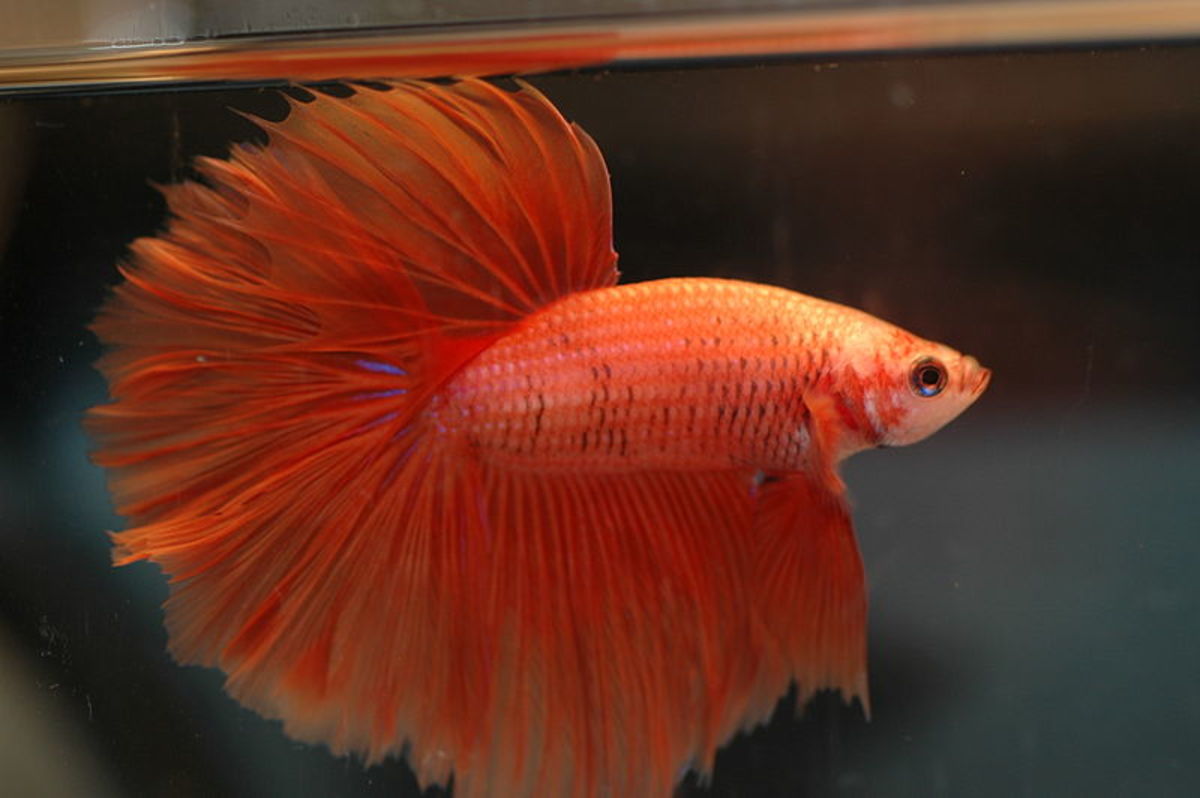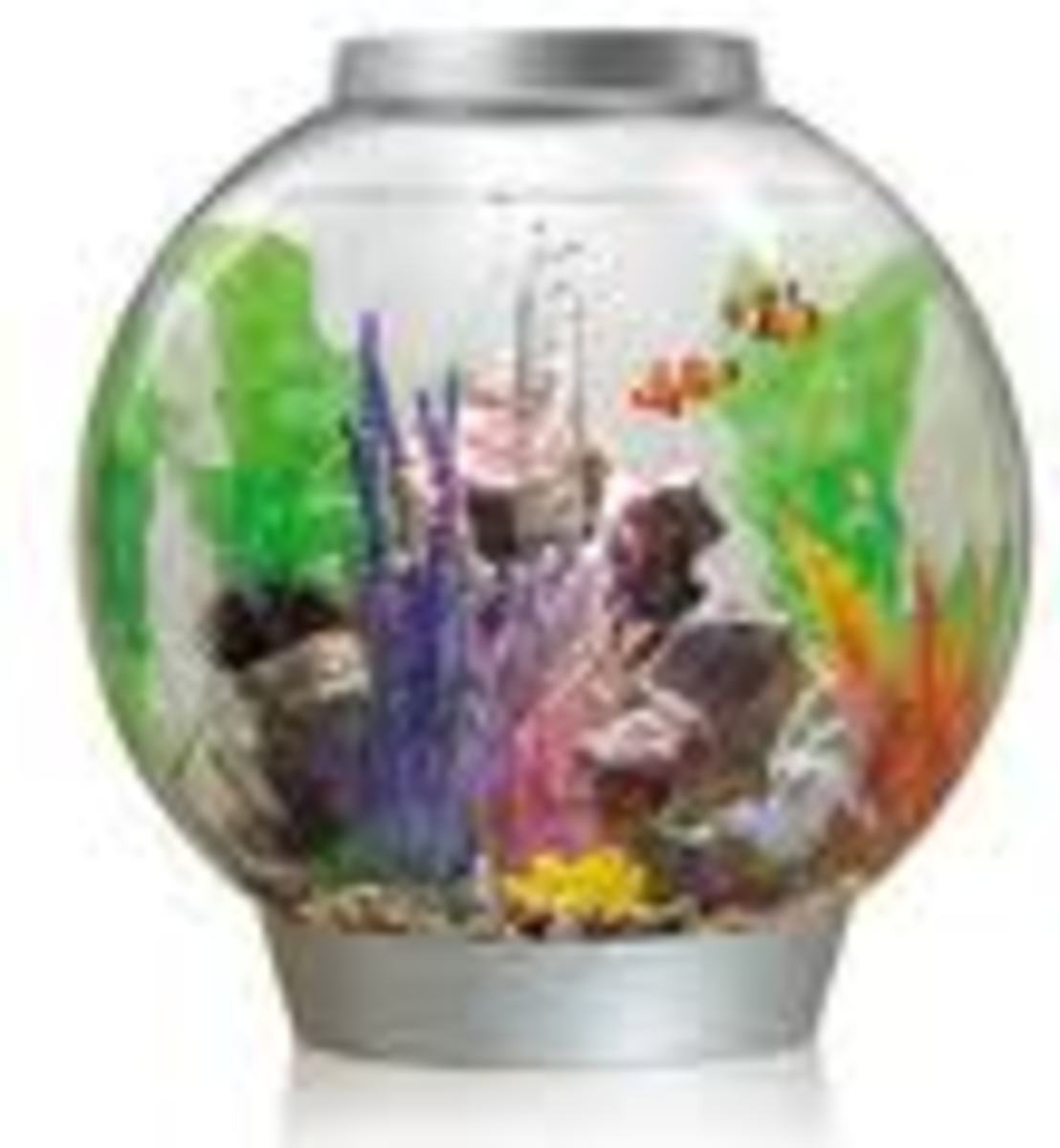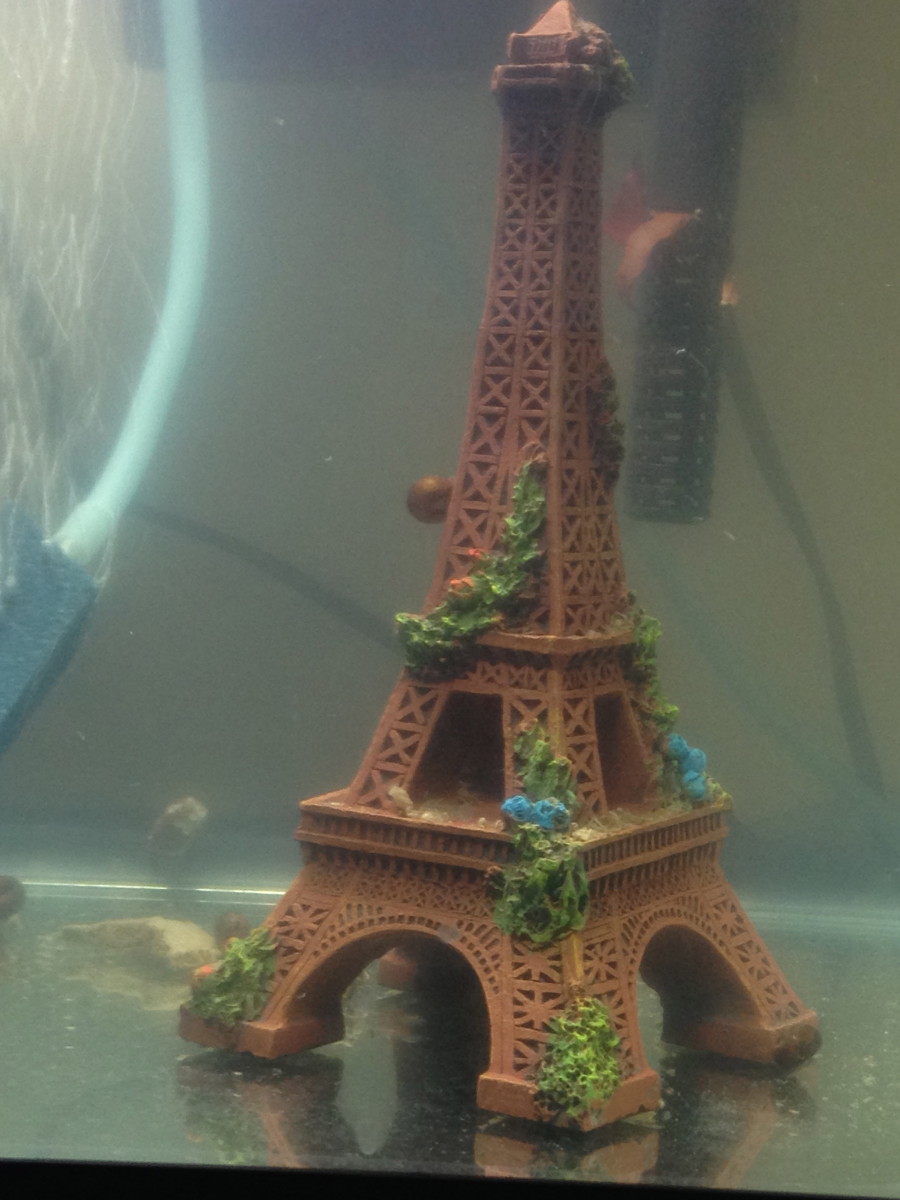The Natural Aquarium, 9 Plants
Yeah, that's me...



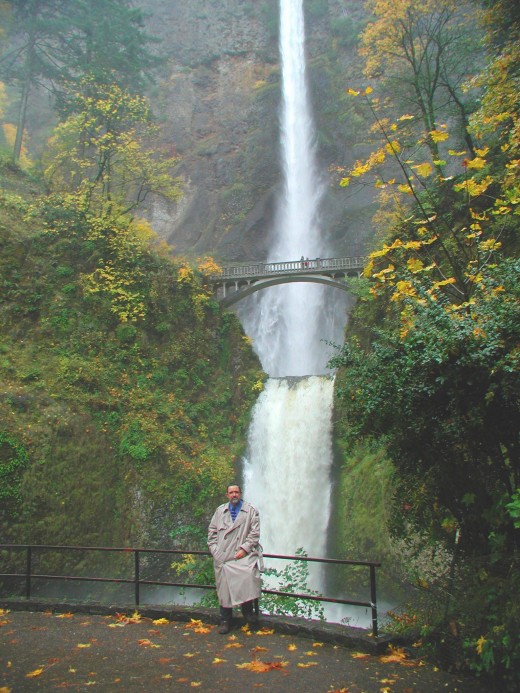
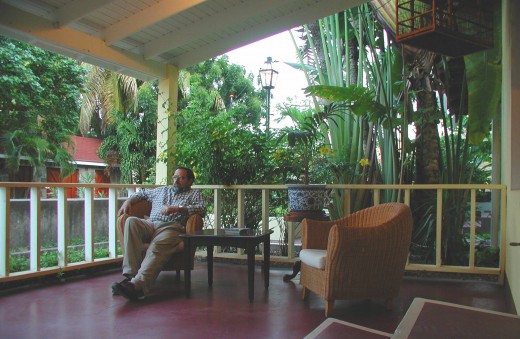
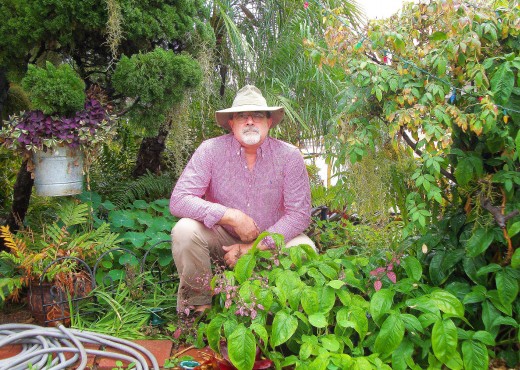
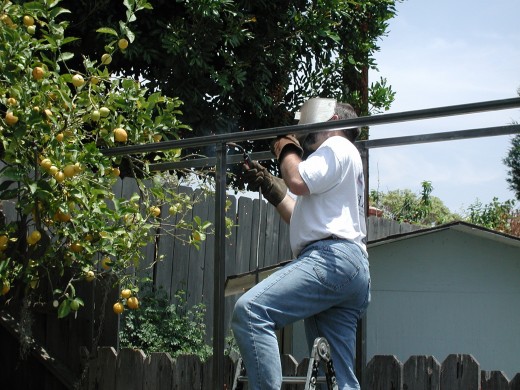


Duckweed for Eutrophication
Duck weed is a small floating plant that can quickly cover a pond with a flat coat of green. The small roots that hang down from the pair of leaves soak up nutrient at an incredible rate.
In our water garden it would become so thick, up to about 1.5” I would take it by the handful and throw it into the mulch pile.
Eutrophication literally means Good Food, but means that there is too much food, usually in an aquatic environment. For instance, agricultural runoff into a pond would make it eutrophic.
Duck weed can be a good answer for such conditions in fresh water ponds.
There is a direct and adverse allelopathic (chemical affect) between duck weed and tropical lilies. I have seen large lilies in ponds and small Tiger Lilies in aquarium kill off Duck Weed almost completely.
Allelopathic relationships between plants can be positive or negative in one or both directions. That is, one plant can create biomolecules and release them in air, the ground, or water which will help or harm another plant and that relationship may or may not be reciprocal, that is, the other plant can return the favor, according to the species.
For instance, the opposite affect seems to be true with Water Fern, a small leaved floating plant with a grayish blue tint. It grows well with Water Lilies but Duck Weed at least slows its growth.
These plants are fine if you have a pond, but keep them out of the aquarium or paludarium unless you enjoy the rather constant work of removing them. In a warm environment they can be quite difficult to deal with simply because of the speed of growth.
Mosses
Water mosses are another joy, but my advice is to avoid Java Moss simply because it is not very attractive and it is hard to get out of a tank. I have had it attached to rocks, I removed the rock and let it sit outside for a month. When I put it back in the tank, the Java Moss came back quite strongly. Many other mosses are quite delight to grow and take much better forms.
Conversely, Riccia, a bright green bryophyte (true moss, both are) is quite attractive but the Agriculture department has restricted its sale fearing problems when it becomes invasive in waterways, and it likes cooler water. In the picture below, Riccia is on the plant in the upper left. It floats and so works its way upward.
I pioneered the use of hardware screen to hold it down and create a grass like effect. At the time, some 20 years ago, people were tying it to rocks and wood. I had tanks with a lawn. Now, you can find people selling screen for this use on E-Bay.
A missed opportunity, oh, well.
However, as more and more mosses became available I wanted to use as much as possible and then heard of people who created moss walls. I didn’t have an explanation of how that was done, but went to the hardware store and purchased a roll of gardening screen. I fastened this to the back of the tank with suction cups then stuffed moss into the little open squares.
I became the local supplier for moss for several tropical fish stores.
In the image below, the moss wall is visible. Remarkably, so is the Ambulia, but I was fertilizing the tanks at this time, and so they had plenty of nutrient for growth.
But I noticed a similar allelopathic relationship with them. When there is a lot of Riccia, the Java Moss doesn’t fair well, this I knew, but where there are a lot of mosses, the Riccia seems to struggle to compete for food. I usually have quite literally several strands of Riccia in the tank.
Moss responds within seconds to nutrients, which is faster than other plants, and so, responds faster to nutrient added to the tank. This keeps the nutrient levels low and so limits algae (not a bad thing, but indicator of the health of the tank), but also completes against other plants and so, shortly after the image above, the Ambulia slowed down quite a bit.
I know a little about raising aquatic moss...just a little
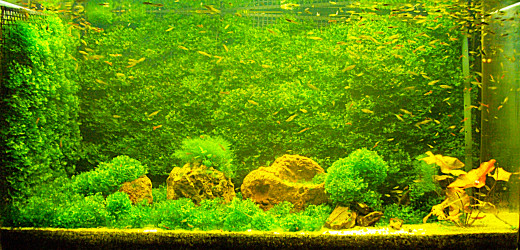
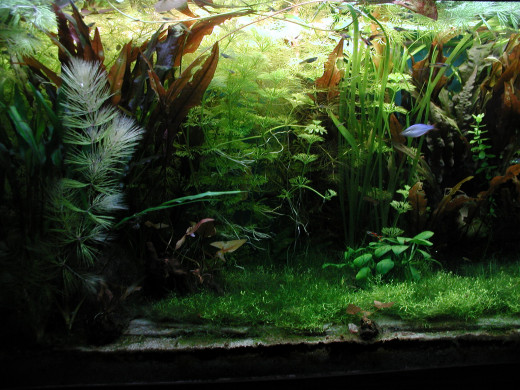
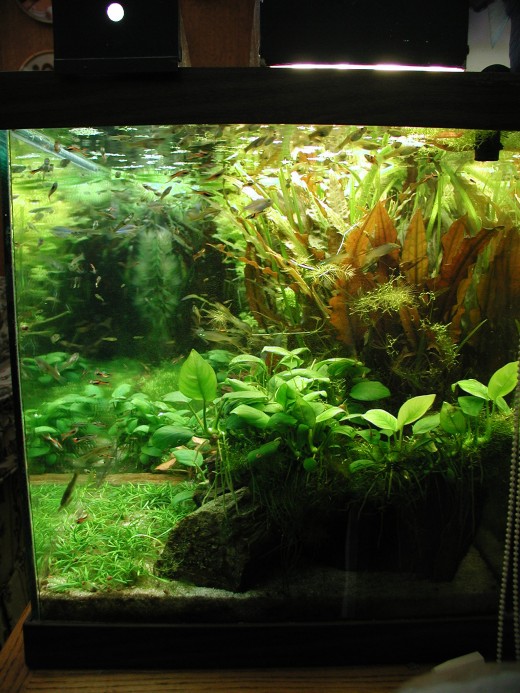
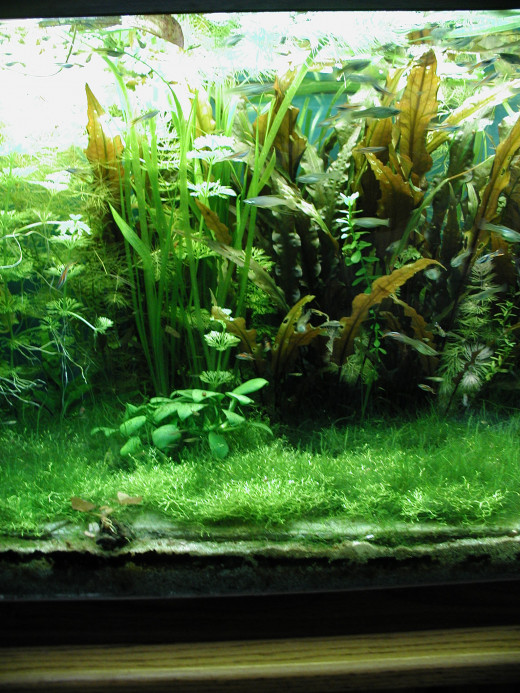
Allelopathic Plants
I like tropical water lilies and have had many of them gracing my tanks. Then I got into mosses. Mosses compete efficiently for nutrients. This is fine for most rooted plants, but not for the water lilies, they all died. This is competition for nutrients. Allelopathy is different.
I had two different ponds outside. One was dominated on the surface by duck weed and the other by water fern. Pretty much an even match for nutrient, whichever there was more of would eventually displace most of the other, and you could bias that race by removing the one you wanted less of. However, I put in a water lily and that dynamic changed.
During the winter my duckweed tank was covered with duck weed. During the summer, more or less as soon as it was warm enough for lily leaves to appear, the duck weed started to disappear.
This was useful because some duckweed has gotten into my home aquarium and, because of the various pipes and wires going into the tank, I never seemed to be able to get it all out. That is when I discovered the small lilies used in aquariums. I put one in and all the duckweed died.
This is a negative allelopathic relationship. By negative I mean that one plant harmed another. There are also positive relationships, such as in companion plantings in the aquarium or garden, but usually when you hear this word, it is speaking of negative allelopathy.
These are designed for the plant to compete against other plants. In the Southwest we have a plant called a Creosote bush or chaparral if used as an herb. It is the tar of this plant that was long used in the preservation of telephone poles because it seems toxic to most things. Plants will not grow in the root range of these plants. This is allelopathy.
Here is one you can use in your favor: Take the leaves of deciduous plants and soak them in water for three days. Add a little of this to your aquarium and you will impede algae growth. All other plants will grow faster as well. I had my son do a science fair project on this some ten years ago, so this is neither speculation nor competition for nutrients. If you test these in separate containers, all plants including bryophytes (mosses) grow faster and you can kill algae.
Be careful if you have shrimp, add a little each day. If you add too much too fast you will kill some or all of your shrimp.
© 2015 Ronald A Newcomb

